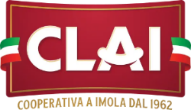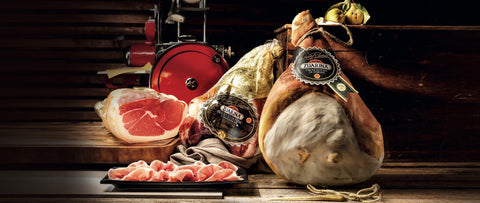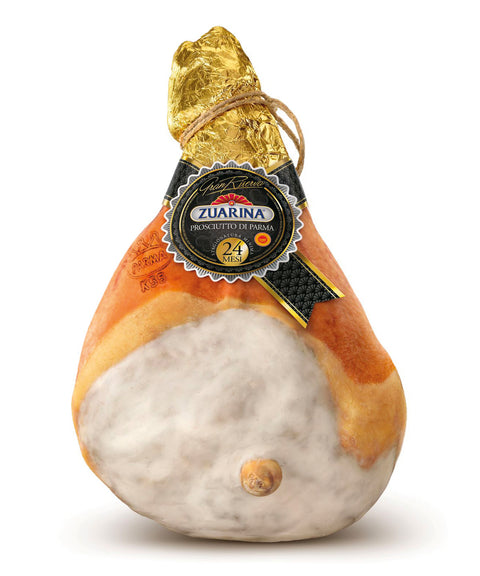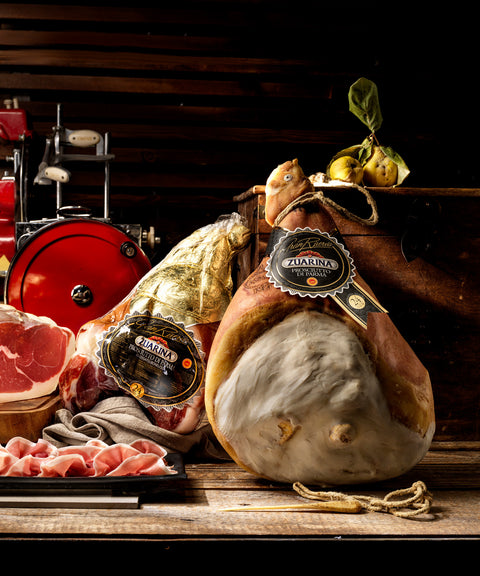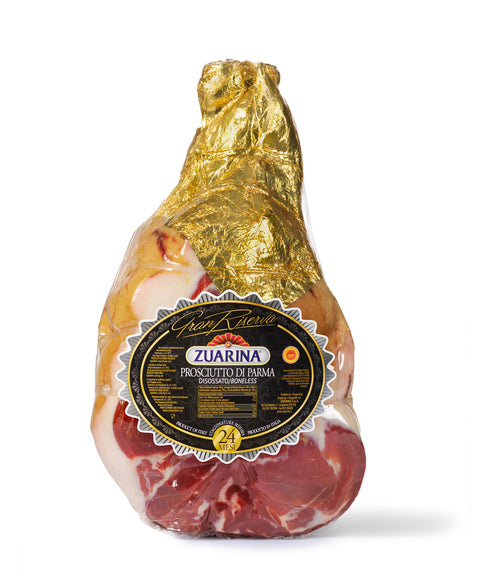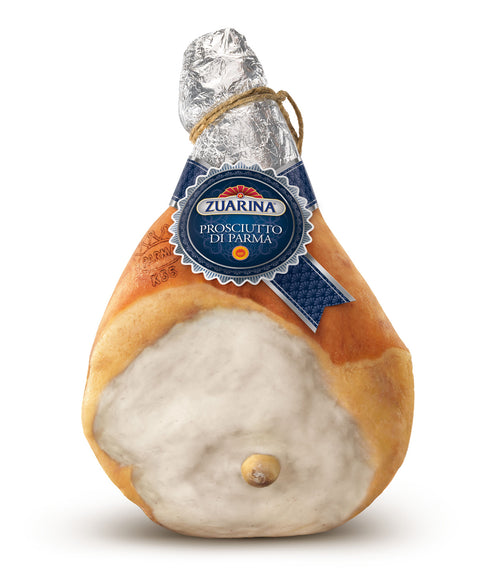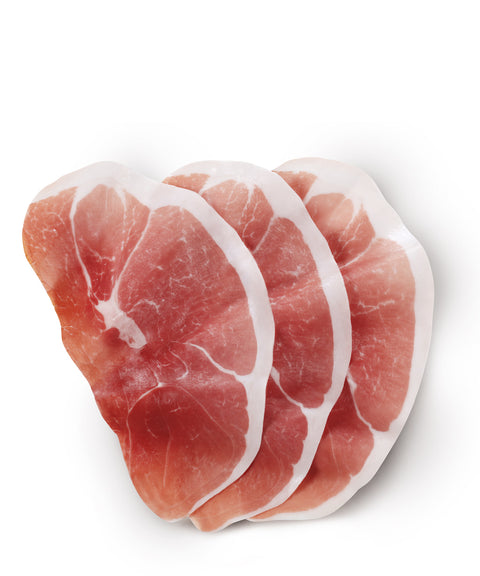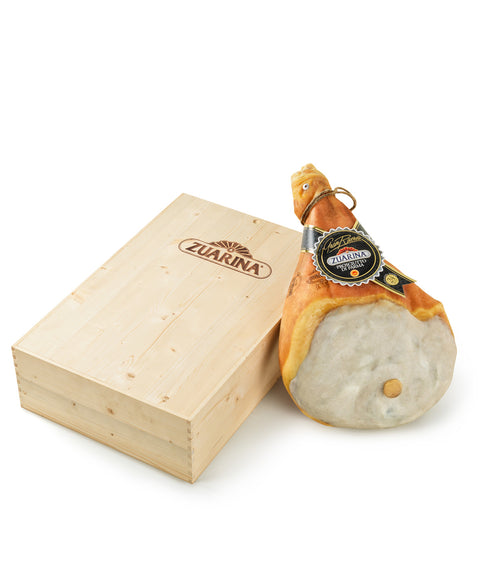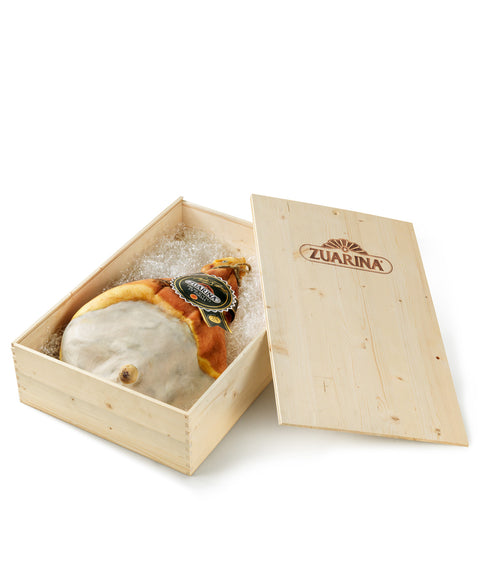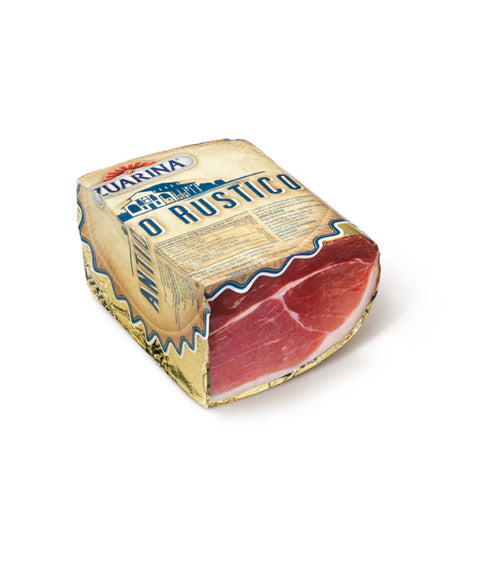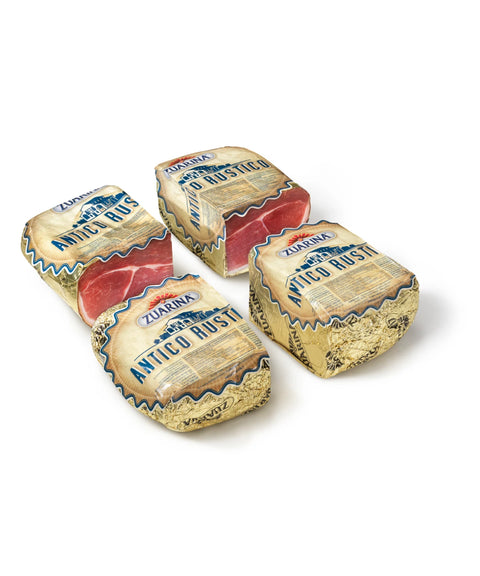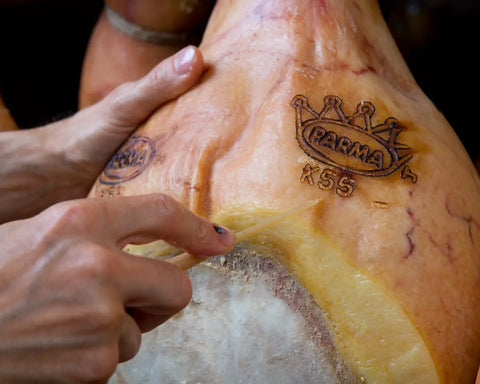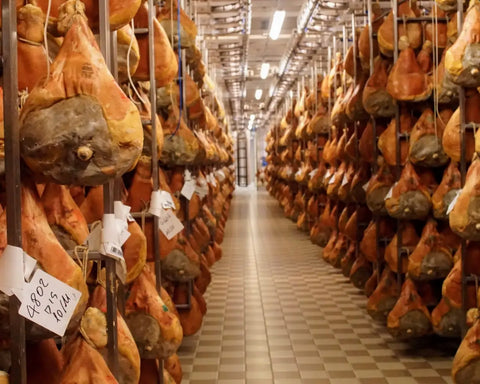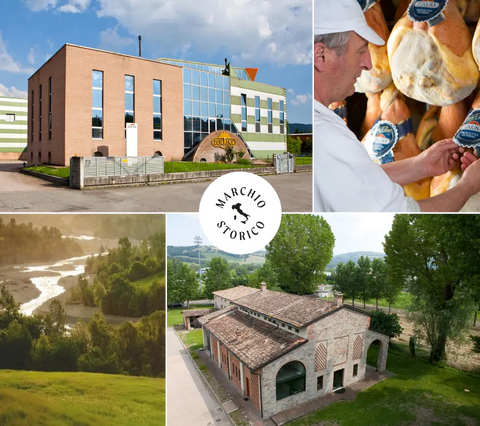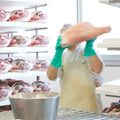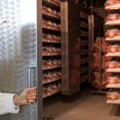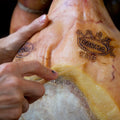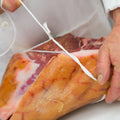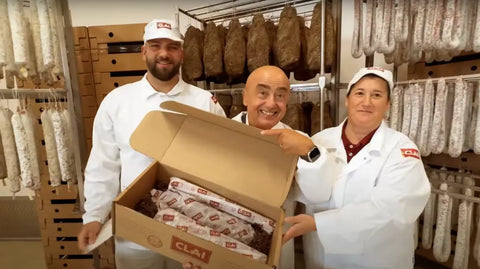Discover Zuarina Prosciutto di Parma, a historic company from Langhirano renowned for its tradition and artisanal mastery. Made from carefully selected pork and aged with care, Zuarina Prosciutto di Parma, whole or deboned, offers an authentic and unmistakable flavor.
Prosciutto di Parma
Prosciutto di Parma, whose name comes from the Latin "perexsuctum" (which literally means "dried"), is a healthy, genuine, and high-quality product.
No preservatives or additives are used, resulting in a tasty and completely natural ham.
In addition to pork leg and sea salt, two other fundamental elements play a role in its preparation: time and the wind from the fragrant Parma hills, characterized by a dry and gentle breeze.
This territory, located in a very small area of the province of Parma, offers the ideal climate conditions for natural curing, giving Prosciutto di Parma its unmistakable sweetness and flavor.
As a PDO product, Prosciutto di Parma undergoes a rigorous production process that culminates in a thorough inspection and the branding of the Ducal Crown. This distinctive mark guarantees consumers absolute excellence and authenticity.
For more information, visit the official website of the Parma Consortium: www.prosciuttodiparma.com
The historic Zuarina brand, a passion lasting for over 160 years.
There is a limited number of companies in Italy, of absolute excellence and with a history of at least 50 years, that can bear the title of ‘Historic Brand of National Interest.’
In the case of the Zuarina ham factory, it all began in 1860 in Langhirano, a small town on the foothills of the Parma Apennines.
Here, the woods of the Apennines meet the sea breeze from Versilia which, infused with the aroma of pine forests and the scent of chestnut groves, imparts to the hams an unmistakable sweetness and fragrance. The slow and patient curing of the hams follows the rhythm of the seasons, respecting tradition and the ancient craftsmanship.
